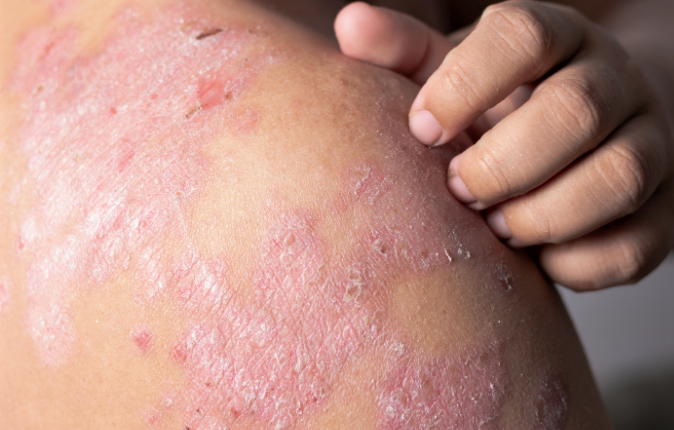
Eczema or cold dermatitis: here's what to do
Itching, cracking and redness of the skin are just some of the symptoms of eczema or dermatitis, which can worsen with winter and low temperatures. Here’s what to do
That uncomfortable itching and dry, tight skin is a common sensation in winter, which is also the time of year when some forms of eczema, especially chronic ones, tend to worsen.
What is eczema or dermatitis?
Eczema or dermatitis is an inflammatory skin reaction affecting the epidermis and dermis.
There are numerous types of dermatitis, due to as many different causes, but in winter in particular, some of these are worsened, such as irritative dermatitis and allergic contact dermatitis, which often characterise areas that are exposed to cold, such as the hands.
Irritative dermatitis
Irritative dermatitis is caused by acute or prolonged contact with irritants that damage the skin barrier, such as:
- soaps;
- detergents;
- acids;
- industrial solvents;
- certain commercial sanitising gels, etc.
Allergic contact dermatitis
Allergic contact dermatitis, on the other hand, is a sensitisation to an external factor: an allergy that, therefore, only manifests itself in subjects who have become sensitised to that specific allergen.
While irritative dermatitis is limited to the site of contact with the irritant, allergic contact dermatitis, contrary to its name, has no such boundary and, instead, extends outwards, sometimes even becoming generalised.
Symptoms of eczema
These eczematous forms are characterised by the presence of symptoms, which can be exacerbated in winter, such as
- dryness of the skin
- thickening of the skin (hyperkeratosis);
- erythema, i.e. a reddening of the skin;
- fissures and rhagades, i.e. lesions of the skin with a linear and elongated shape;
- itching;
- scabs.
Why does eczema get worse in cold weather?
In winter eczema conditions can worsen, especially chronic ones, because with the reduction in temperature there is also a vasoconstriction (especially in the periphery of the limbs), which negatively affects the synthesis of those substances that form the skin barrier, including lipids, which make it soft and moisturised.
This makes the skin drier and more susceptible to external agents.
How to treat eczema
The treatment of eczema depends on the phase of the pathology:
- in the acute phase of eczema, with erythematous-vesicular lesions, the need to block the inflammatory process can lead to the use, on medical prescription, of cortisone and steroid creams;
- in the chronic phase, when desquamation and dryness tends to prevail with the formation of ragadiform fissures, it is essential to use emollients, which also act on wound healing and repair.
In particular, emollient products and ointments are a valid and adjuvant therapy at all stages of the pathology, as is the use of hypoallergenic, pH-neutral detergents.
Finally, in the most important cases of hand dermatitis, the use of cotton gloves is recommended, i.e. made of natural fibres, which have a protective function towards the outside and can include the use of creams inside.
Advice against cold dermatitis
The doctor concludes by recalling some tips that can be useful against eczema in winter:
- use gloves, if the dermatitis is on the hands, so as to protect them from the cold or, in any case and if possible, cover and keep warm the area affected by the pathology;
- use moisturising creams or ointments several times a day and with constancy. In the case of dermatitis of the hands, use them, for example, after each use of hydralcoholic gel;
- reduce, as far as possible, washing of the eczematous area so as not to dehydrate and further impoverish the lipid barrier and always use delicate detergents, preferably without soap;
- try to reduce, if possible, contact with irritating or allergenic substances.
Particularly in cases of allergic contact dermatitis, in order to be able to intervene it is essential to identify which substance is causing the allergy, for example by means of patch tests: patches that include a series of predefined allergens (perfumes, dyes, metals, etc.) and that are applied to the back for a period of 48 hours after which they are removed for appropriate evaluations.
Read Also:
Emergency Live Even More…Live: Download The New Free App Of Your Newspaper For IOS And Android
SkinNeutrAll®: Checkmate For Skin-Damaging And Flammable Substances
Healing Wounds And Perfusion Oximeter, New Skin-Like Sensor Can Map Blood-Oxygen Levels
Psoriasis, An Ageless Skin Disease
Vitiligo, The Dermatologist: ‘Mitigated With Innovative Therapeutic Approaches’



